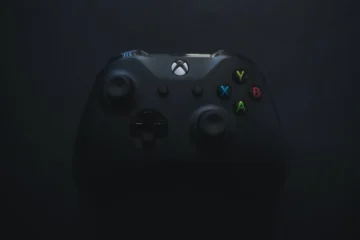It’s an appealing concept to play the most recent AAA video games on your smartphone via streaming. You can use the most recent and greatest hardware, so forget about mobile apps and the Nintendo Switch! Sadly, there might be some restrictions here.
- Gaming on a handheld or mobile device will never completely replaced by cloud gaming
- Gaming in the cloud is great (under ideal circumstances)
- Wireless Networks Are Unstable by Design
- Networks Can’t Go Where Local Apps Can
- Mobile broadband is a monthly expense
- Gaming in the cloud is a limited shared resource
- Wireless Cloud Gaming’s Future
Gaming on a handheld or mobile device will never completely replaced by cloud gaming
Gaming on handheld or mobile devices has been a popular pastime for decades. The convenience and portability of these devices have made them a staple in the gaming industry. However, with the rise of cloud gaming, some have questioned whether traditional handheld and mobile gaming will become obsolete.
In this article, we will explore the advantages and limitations of both cloud gaming and handheld/mobile gaming, and argue that handheld and mobile gaming will never be completely replaced by cloud gaming. Despite the advancements in technology and the popularity of cloud gaming, handheld and mobile devices will always have a place in the gaming world.
Gaming in the cloud is great (under ideal circumstances)
Cloud gaming has advanced significantly. Cloud gaming infrastructure has been built by Google, Microsoft, Sony, and NVIDIA, among other companies. Cloud gaming services are becoming a viable alternative to purchasing a gaming console or expensive gaming PC for those who reside in areas where they are available.
That is, as long as you fulfill all of the conditions! When you connect a high-speed fiber connection to a wired Ethernet connection, you can experience visuals and responsiveness comparable to those of playing on a local machine. At the very least so long as you do not compare it to a local gaming system.
However, for cloud gaming to work well, a lot of different stars need to align. It’s possible that your screen output and controller input now span hundreds of miles. There are numerous potential points of failure along that path, and in order to be playable, the entire process from the controller to the screen must be completed in milliseconds.
Because cloud gaming presents a significant technical challenge, you should avoid introducing more variables than necessary. Sadly, you are doing exactly that when you switch to wireless data transmission.
Wireless Networks Are Unstable by Design
When compared to sending electrical impulses in an organized manner down a copper wire or as pulses of light captured in a fiber optic strand, the process of sending information using electromagnetic waves that are propagated through the air is significantly more chaotic.
The ground, space, moving metal objects like automobiles, and even radio-blocking materials in your home can all cause interference to wireless transmissions.
Both the Wi-Fi and cellular transmission technologies are extremely resistant to these issues. They will resend any lost data packets until you receive all of them. Speed may be sacrificed from time to time, but more often than not, latency will be added.
This isn’t a big deal for applications like web browsing, streaming video, and even real-time applications like VOIP or video calls. If you add a few milliseconds of latency, these applications work fine. Video games are unique. They become unplayable with an excess of latency.
Video games also don’t work well with the frequent and sudden dropouts of wireless technology. While not catastrophic, experiencing a one-second freeze while watching a video or making a video call can completely ruin your gaming experience.
Networks Can’t Go Where Local Apps Can
There are numerous locations where you simply cannot access the wireless network at all, even if you have a high tolerance for issues with wireless signal. Even in densely populated urban areas, there are always cellular dead spots. Therefore, even if you are close to network infrastructure, you will not always have access.
In a similar vein, you probably won’t get a strong enough signal when you board a plane, subway, or other similar transportation mode. Even though these modes of transportation currently provide Wi-Fi, it is unlikely to be powerful enough to handle cloud gaming.
Mobile broadband is a monthly expense
You are responsible for paying for the bandwidth that you use when playing a game via cloud streaming using cellular data. Mobile bandwidth typically costs significantly more than fixed wired broadband. You won’t have to pay to play once, unlike with a handheld system with a local app.
If you use a lot of bandwidth, even if you have an “unlimited” data plan, there is a good chance that you will be throttled or traffic shaped. You are, after all, sharing that bandwidth with everyone else, and your cloud gaming will be slowed down in certain places or at certain times to ensure that everyone receives a portion of the data pipe.
Gaming in the cloud is a limited shared resource
Another issue arises as a result. Cloud gaming is a shared resource that can only be accessed by a certain number of people at once. You can expect to wait in line for a few minutes or even more during peak player demand before cloud hardware becomes available.
The pick-up-and-play nature of handheld and mobile gaming is one of its primary draws. If you want to play games for 15 minutes of free time, waiting for a slot on a cloud server for 10 minutes is not ideal.
Wireless Cloud Gaming’s Future
Will cloud gaming ever be able to truly replace local mobile hardware that you don’t have to share with anyone else? We don’t think it will happen soon, but in the future, high-speed 5G mesh networks or internet satellites in low Earth orbit will cover enough of the world to make it possible.
Nobody can say for sure when or if that day will come. However, prior to setting out for the day, you might want to keep that Nintendo Switch in your bag for the time being.



